Micron M600 (128GB, 256GB & 1TB) SSD Review
by Kristian Vättö on September 29, 2014 8:00 AM ESTRandom Read/Write Speed
The four corners of SSD performance are as follows: random read, random write, sequential read and sequential write speed. Random accesses are generally small in size, while sequential accesses tend to be larger and thus we have the four Iometer tests we use in all of our reviews.
Our first test writes 4KB in a completely random pattern over an 8GB space of the drive to simulate the sort of random access that you'd see on an OS drive (even this is more stressful than a normal desktop user would see). We perform three concurrent IOs and run the test for 3 minutes. The results reported are in average MB/s over the entire time.
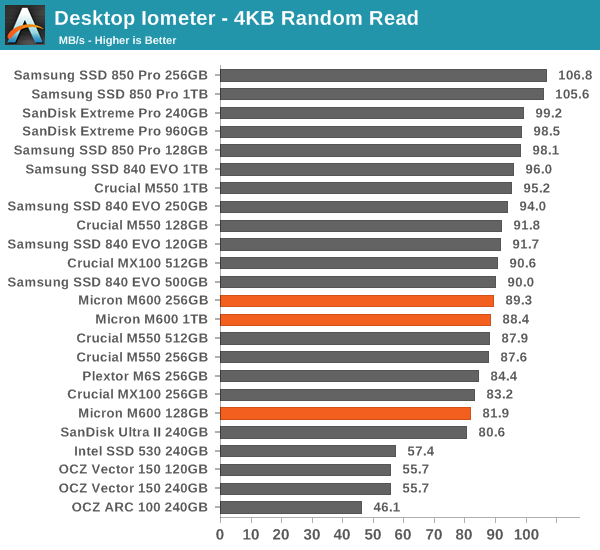
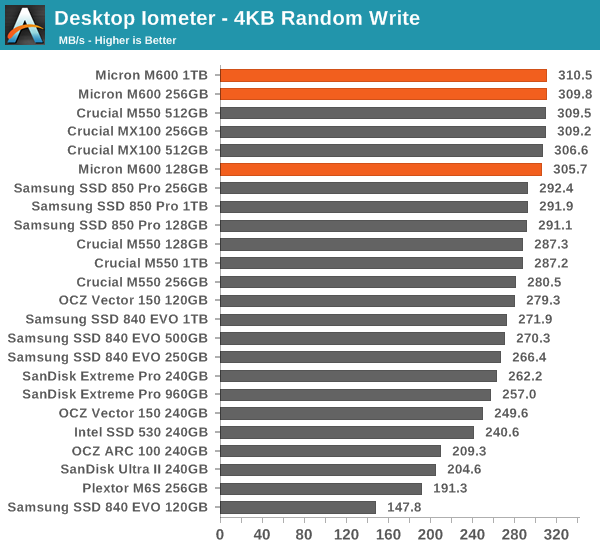
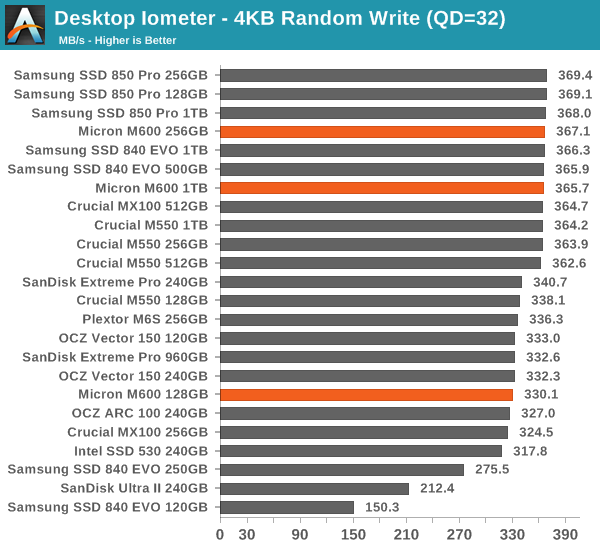
Random performance remains more or less unchanged from the MX100 and M550. Micron has always done well in random performance as long as the IOs are of bursty nature, but Micron's performance consistency under sustained workloads has never been top notch.
Sequential Read/Write Speed
To measure sequential performance we run a 1 minute long 128KB sequential test over the entire span of the drive at a queue depth of 1. The results reported are in average MB/s over the entire test length.
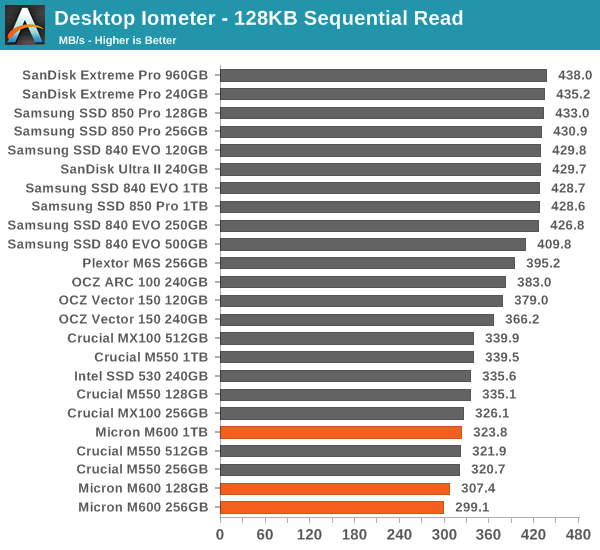
Sequential write performance sees a minor increase at smaller capacities thanks to Dynamic Write Acceleration, but aside from that there is nothing surprising in sequential performance.

AS-SSD Incompressible Sequential Read/Write Performance
The AS-SSD sequential benchmark uses incompressible data for all of its transfers. The result is a pretty big reduction in sequential write speed on SandForce based controllers, but most other controllers are unaffected.

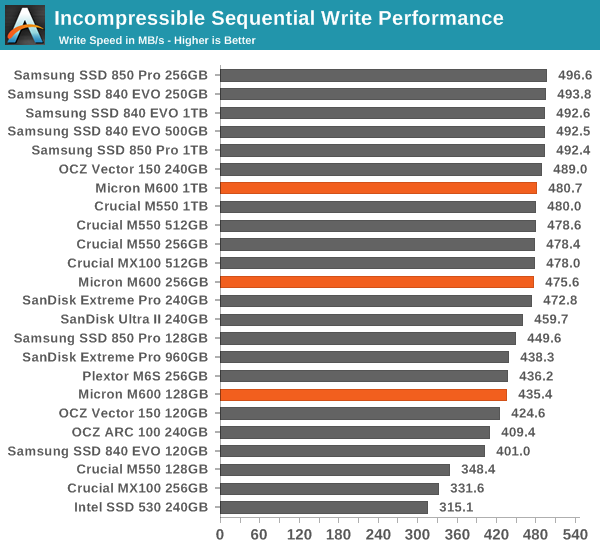










56 Comments
View All Comments
Kristian Vättö - Wednesday, October 1, 2014 - link
Oh, that one. It's from the M600's reviewer's guide and the numbers are based on Micron's own research.maofthnun - Wednesday, October 1, 2014 - link
Thanks for the clarification on the powerloss protection feature. I am very disappointed by how it actually works because that was a major deciding factor in my purchase of the MX100. At the time, the choice was between the MX100 and the Seagate 600 Pro which was $30 more and which also offers powerloss protection. I would have gladly paid the extra $30 if I had known the actual workings of the MX100.Since we're on the topic, I wonder if other relatively recent SSDs within the consumer budget that offer powerloss protection (e.g. Intel 730, Seagate 600 Pro) work the way everyone assumes (flush volatile data)? Would love to hear your comment on this.
Kristian Vättö - Wednesday, October 1, 2014 - link
Seagate 600 Pro is basically an enterprise drive (28% over-provisioning etc), so it does have full power-loss protection. It uses tantalum capacitors like other enterprise SSDs.http://www.anandtech.com/show/6935/seagate-600-ssd...
As for the SSD 730, it too has full power-loss protection, which is because of its enterprise background (it's essentially an S3500 with an overclocked controller/NAND and a more client-optimized firmware). The power-loss protection implementation is the same as in the S3500 and S3700.
maofthnun - Wednesday, October 1, 2014 - link
Thank you. I'll be targeting those two as my future purchase.RAMdiskSeeker - Wednesday, October 1, 2014 - link
If the 256GB drive were formatted with a 110GB partition, would it operate in Dynamic Write Acceleration 100% of the time? If so, this would be an interesting way to get an SLC drive.Romberry - Friday, January 9, 2015 - link
I'm really not sure that the AnandTech Storage Bench 2013 does an adequate job of characterzing the performance of this drive or really, any drive in a consumer class environment. And I'm not sure that filling all the LBA's and looking at the psedo-SLC step down as the drive is filled really tells us anything useful (other than where the break points are...and how much use is that?) either.Performance consistency? Same deal. Almost no one uses consumer class drives (large steady long term massive writes) this way, and those who do use drives this way likely aren't using consumer class drives.
I can really take nothing useful away from this review. And BTW, this whole "Crucial doesn't really have power protection, we didn't actually bother checking but just assumed and repeated the marketing speak before" stuff is not the kind of thing I expect from AnandTech. With that kind of care being taken in these articles, I'll be careful to read things here with the same sort of skepticism I had previously reserved for other sites. I'd sort of suspended that skepticism with AnandTech over the years. My mistake.